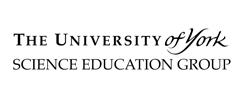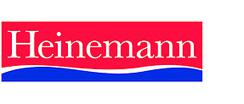- View more resources from this publisher
 University of York Science Education Group (UYSEG)
University of York Science Education Group (UYSEG)
Seeing Inside the Body
A year 11 module from the Salters’ Key Stage Four double award science course. This module deals with radiation and radioactivity, introduced through their uses in medicine, both for diagnosis and treatment. Students simulate non-intrusive tests made by doctors in diagnosing illness. The advantage of access to ‘inside information’ without invasive surgery is made clear. They study the discovery and properties of X-rays and consider the balance of benefit and hazard in potential uses.
A jigsaw exercise is used to review stages in the development of the atomic theory. Students model the structure of atoms and consider mass number and atomic (proton) number. The processes of α and β decay are described, and ways of estimating the age of rocks from isotope ratios are described. The properties of α, β and γ radiation are compared, and radiation exposure data is analysed.
The random nature of radioactive decay and the concept of half-life are demonstrated. The use of half-life in choosing the right isotope to use for different purposes is considered. The difference between irradiation and contamination is defined. The variety of different types of radiation used in medicine is studied and students devise an information leaflet about ultrasound scanning.
Section 1: X-rays in medicine
Students simulate non-intrusive tests made by doctors in diagnosing illness. The advantage of access to ‘inside information’ without invasive surgery is made clear. They study the discovery and properties of X-rays and consider the balance of benefit and hazard in potential uses.
Section 2: Radiation is all around us
A practical demonstration and text exercise introduce ionising radiation through analysis of exposure data. Students estimate their own exposure. The properties of α, β and γ radiation are compared.
Section 3: What are atoms made of?
A jigsaw exercise is used to review stages in the development of the atomic theory. Students model the structure of atoms and consider mass number and atomic (proton) number. The processes of α and β decay are described, and ways of estimating the age of rocks from isotope ratios are described.
Section 4: How long will it last?
Various demonstrations illustrate the random nature of radioactive decay and the concept of half-life. The use of half-life in choosing the right isotope to use for different purposes is considered. The difference between irradiation and contamination is defined. A text exercise considers the effects of the Chernobyl nuclear accident.
Section 5: Medical uses of Radiation
The variety of different types of radiation used in medicine is studied and students devise an information leaflet about ultrasound scanning.
Pages from the second edition of the Year Ten teacher/technician pack are included.
Show health and safety information
Please be aware that resources have been published on the website in the form that they were originally supplied. This means that procedures reflect general practice and standards applicable at the time resources were produced and cannot be assumed to be acceptable today. Website users are fully responsible for ensuring that any activity, including practical work, which they carry out is in accordance with current regulations related to health and safety and that an appropriate risk assessment has been carried out.
Downloads
-
Seeing inside the body 7.98 MB





